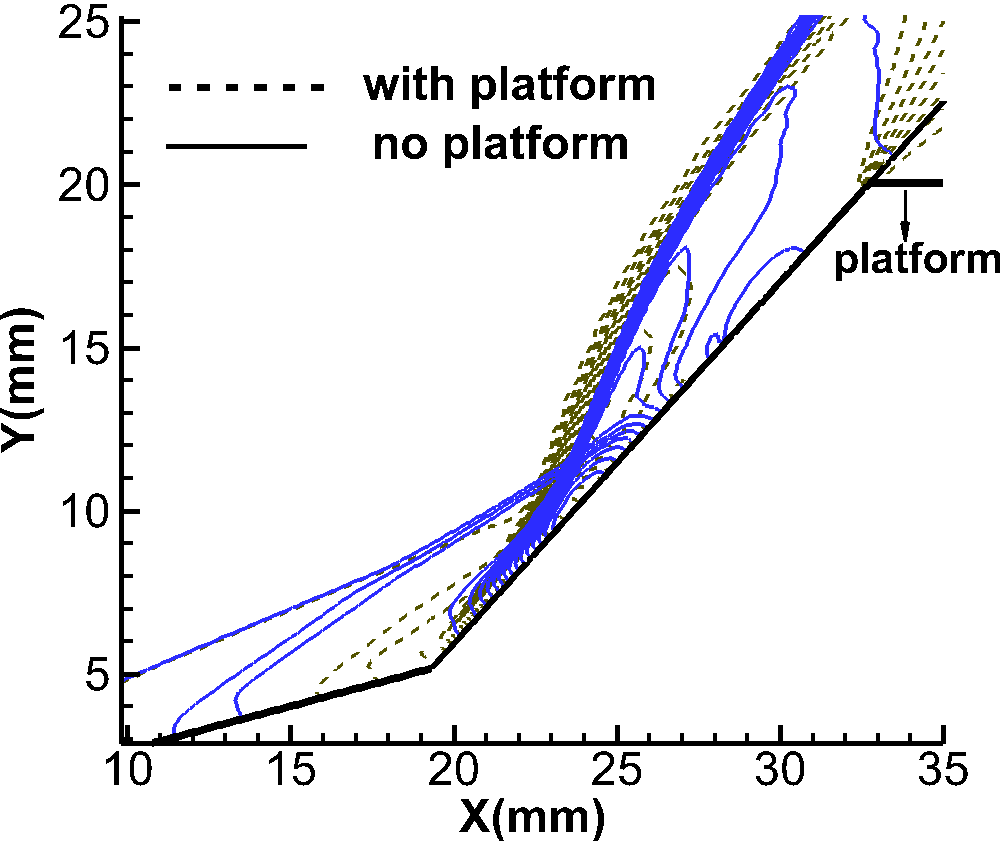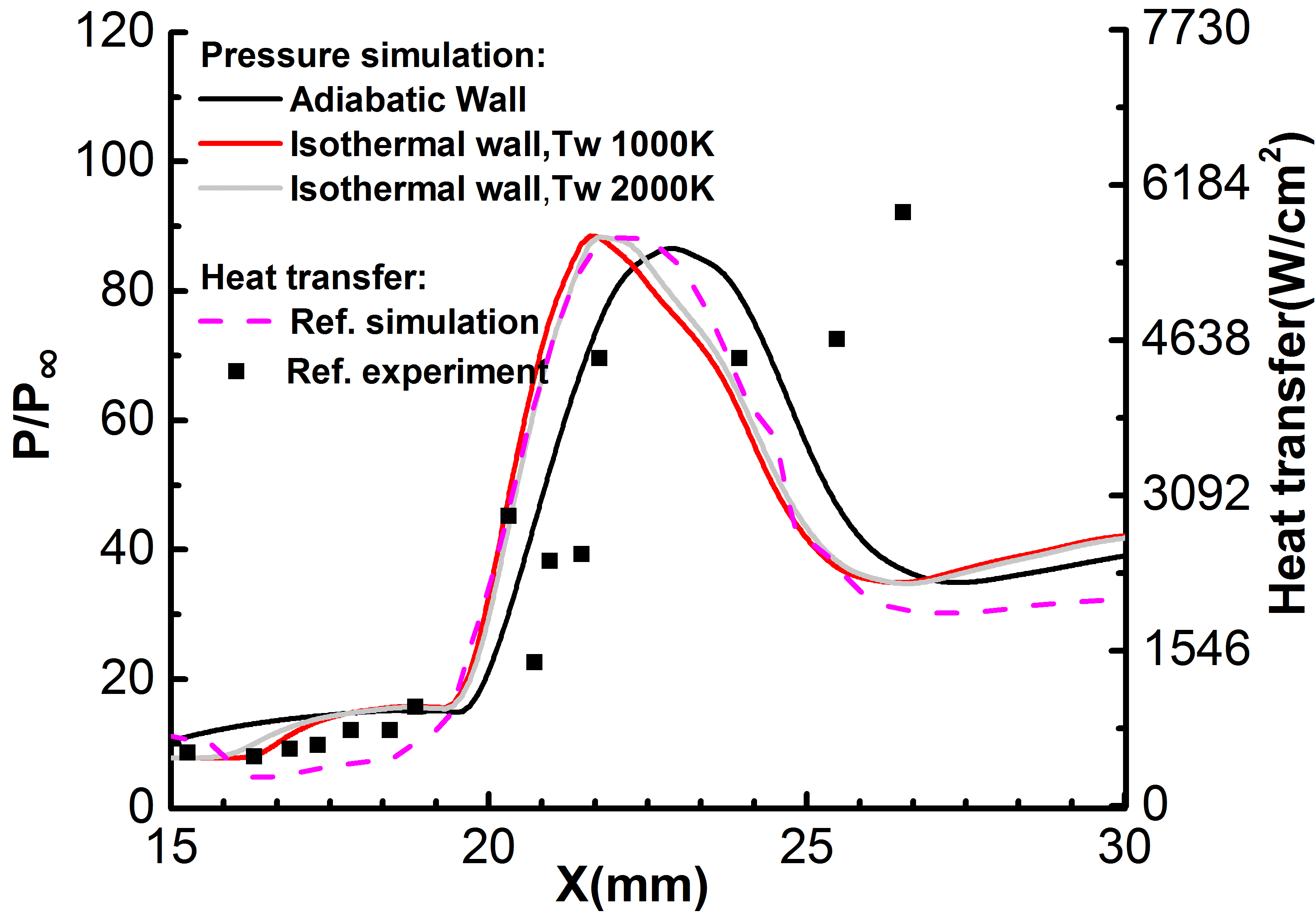Hypersonic double wedge flow is a complex phenomenon featured with rich shock-shock and shock-boundary-layer interactions, as well as thermochemical non-equilibrium under high enthalpy condition. Because of the constant appearance of the geometry in hypersonic engineering and the possibly vital impact of shock interactions on aerodynamic and thermal loads, the problem has been extensively investigated. Despite of the patterns and the classification of the pure interaction between two oblique shocks [1], knowledge on shock boundary layer interaction and combined effects of thermochemical non-equilibrium still lacks of generality. Insufficiency of numerical simulation in reproduction of experimental results presents one of obstacles [2].
The present study attempts to clarify the causes of the inconsistency between numerical and experimental results by evaluating a variety of computational setups, such as the state of incoming flow, geometry of the wedge, wall boundary condition, thermochemical relaxation models, turbulence, etc.
A two-dimensional numerical solver of finite volume method based on unstructured quadrilateral grids is employed for the test. Preliminary results are shown in Figure 1 and 2, where the wedge model and the test condition are taken from reference [3]. The effect of different rear end and thermal boundary condition is examined. It shows that the geometry of the wedge rear end has a significant influence on the flow field, and the platform rear tends to suppress the upstream flow separation. On the other hand, the effect of thermal boundary condition is rather minor. Higher wall temperature slightly promotes separation. Nevertheless, varying these two factors fails to reach a completely separated flow as appears in experiment. A more complete analysis will be presented in the full paper.

Figure1 Pressure contour of double-wedge flow with two different types of rear end

Figure2 Wall pressure distribution of double-wedge flow under different thermal boundary condition
References
[1]. J. Olejniczak, M.J. Wright, G.V. Candler. Numerical study of inviscid shock interactions on double-wedge geometries. J Fluid Mech, 1997, Vol.352:1-25.
[2]. J.R.Komives, I. Nompelis, G.V. Candler. Numerical investigation of unsteady heat transfer on a double wedge geometry in hypersonic flows. 44th AIAA Fluid Dynamics Conference, 2014.
[3]. J. Olejniczak, G.V. Candler, M.J. Wright, I. Leyva, H.G. Hornung. Experimental and computational study of high enthalpy double-wedge flows. Journal of Thermophysics and Heat Transfer, vol.13, No4, 1999.

